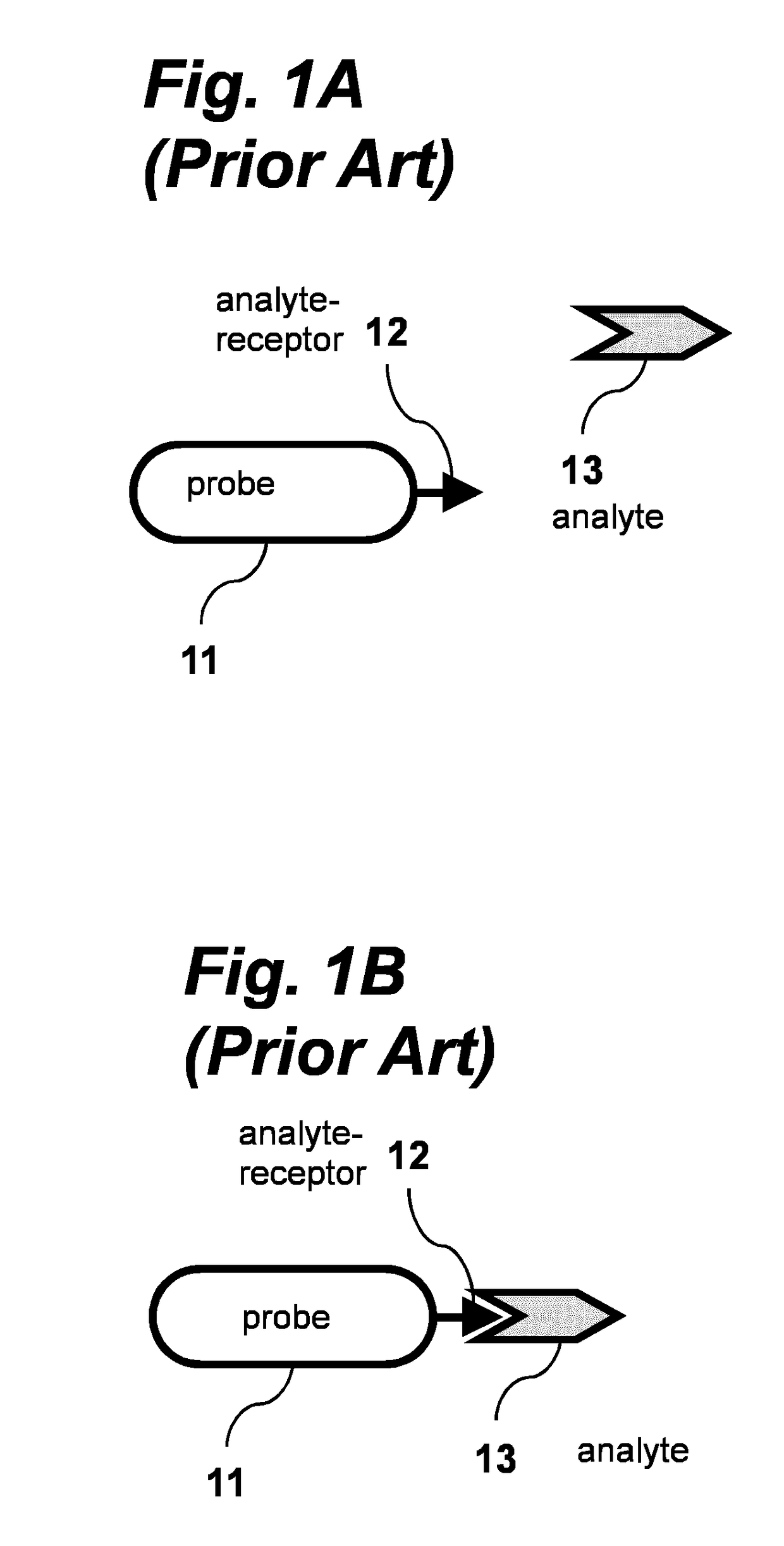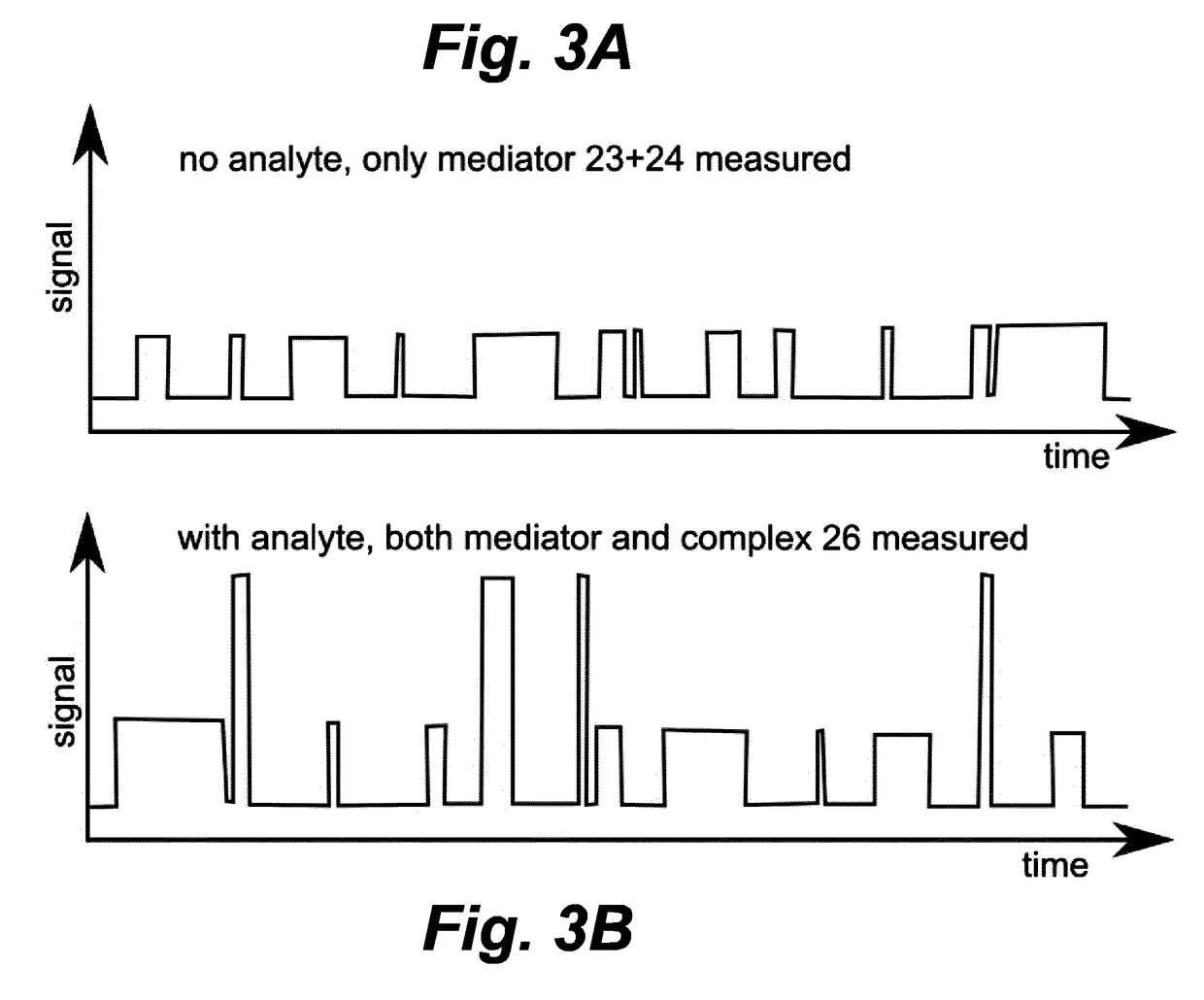Dynamic switching biosensor
a biosensor and dynamic switching technology, applied in the field of biochemical detection and monitoring, can solve the problems of slow response time of the sensor, signal and noise characteristics can change over time, and prolong the blocking time, and achieve high specificity, high off-rate, and high dynamic signals.
- Summary
- Abstract
- Description
- Claims
- Application Information
AI Technical Summary
Benefits of technology
Problems solved by technology
Method used
Image
Examples
Embodiment Construction
[0024]A biosensing technique using a non-tethered mediator according to one embodiment of the invention is schematically illustrated in FIGS. 2A-C.
[0025]As shown in FIG. 2A, biosensing probe 21 carries at least one mediator-receptor 22 on its surface. Mediator 23 is conjugated to at least one analyte-receptor 24, and is present in the environment of at least one probe 21. This configuration represents a probe 21 with a mediator-receptor 22 to which no mediator 23 is bound, and a mediator 23 to which no analyte 25 is bound. As shown in FIG. 2B, mediator 23 can bind to mediator-receptor 22. Alternatively mediator 23 can also bind to analyte 25 via analyte-receptor 24, forming complex 26. As shown in FIG. 2C, Mediator 23 can simultaneously bind both to mediator receptor 22 and to analyte 25.
[0026]The probe 21 is a biosensing element that can report binding events with single-object resolution, where the object is a molecule, a macromolecule, a nanoparticle, etc. The probe can be a mole...
PUM
| Property | Measurement | Unit |
|---|---|---|
| diameter | aaaaa | aaaaa |
| diameter | aaaaa | aaaaa |
| size | aaaaa | aaaaa |
Abstract
Description
Claims
Application Information
 Login to View More
Login to View More - R&D
- Intellectual Property
- Life Sciences
- Materials
- Tech Scout
- Unparalleled Data Quality
- Higher Quality Content
- 60% Fewer Hallucinations
Browse by: Latest US Patents, China's latest patents, Technical Efficacy Thesaurus, Application Domain, Technology Topic, Popular Technical Reports.
© 2025 PatSnap. All rights reserved.Legal|Privacy policy|Modern Slavery Act Transparency Statement|Sitemap|About US| Contact US: help@patsnap.com



